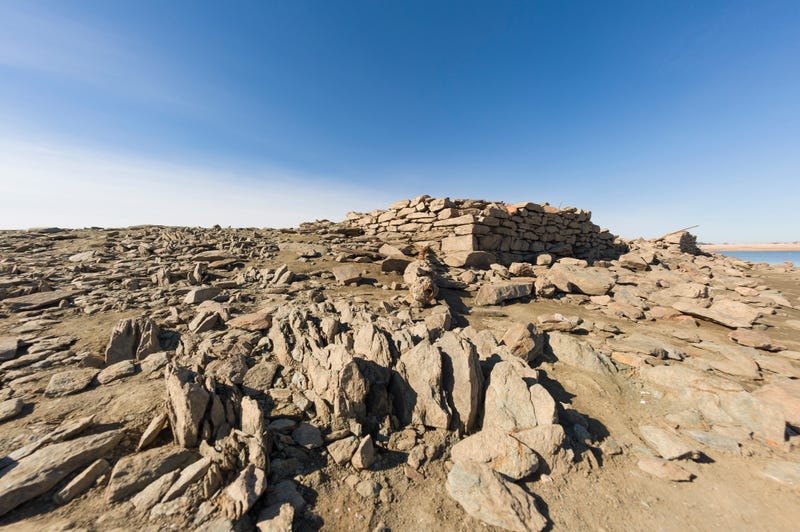
Gold Rush-era communities that have been submerged under California’s Folsom Lake for decades are coming back to the surface as a drought lowers water levels.
“With historically low water levels that have been worsened by the impacts of climate change artifacts and ruins once belonging to past communities and cultures of the area are now appearing along the lakebed,” said a Facebook post last week from Folsom Lake State Recreation Area.
Listen to your favorite News/Talk station now on Audacy.
Folsom Lake is a reservoir on the American River, located in the Sierra Nevada foothills around 25 miles northeast of Sacramento. When it was formed during the creation of Folsom Dam in 1955, former Gold Rush settlements were destroyed, according to the Los Angeles Times. However, some artifacts remain in the lakebed.
Settlers lived in towns such as Salmon Falls, Red Banks and Mormon Island farmed and mined gold in the area for more than a century before the dam was built, said the Los Angeles Times. Both the dam and the lake are part of a project to prevent flooding in the area.
Usually, lake elevations range from 426 feet to 466 feet. As of Wednesday, the water level was just over 377 feet, according to Lakes Online.
This summer, California has struggled with droughts throughout the state. NBC 4 reported earlier this month that around 33 percent of the state was in a drought. A drought in 2014 also revealed buildings from the communities, said KCRA 3.
“The biggest structures that folks are going to see are stone walls and other remnants of the buildings,” as well as ruins of the old water system, Folsom Lake State Recreation Area Superintendent Richard Preston-LeMay said.
Anyone visiting the area this season should be careful not to disturb any artifacts coming to the surface, said the state recreation area post.
“Remember that the people who lived here and their families are still alive today and we owe them respect by not destroying their family’s history,” said the post. “Removing or tampering with archeological sites is a violation of state and federal laws and are punishable by a large fine and/or jail time.”
According to the Los Angeles Times, removing artifacts can lead to fines up to $250,000 Under the Archaeological Resources Protection Act.
Metal detectors are also prohibited at the site.
“It is a unique experience to visit the remains of a historic site and wonder when it was used and how people lived there,” Preston-LeMay said in a statement. “If these historic objects are moved or removed, this experience is ruined for others.”
He also said that interpretative staff would be on site to educate the public and protect the site.



